Merch by Amazon Success: Interview with Michael Essany
Today’s guest on our interview series is someone I have never actually met in person but I feel like I almost know since we have been corresponding for so long. This is none other than Michael Essany. The first time I actually came in contact with Michael was fairly soon after we released Merch Informer! It just so happens that Michael is a very prolific writer and always has a ton to say. On that specific day, one of the websites that he writes for, decided to cover our platform.
Essany’s claim to fame so to speak is in scaled designs. It boils down to finding a winner, and spinning off that winner in other directions to capture more sales. I have to admit, we have used this technique ourselves to great success, but from talking to Michael, we do it a little bit different.
Today, I had the pleasure to sit down and ask him some questions about his business, where it is heading, and how he is taking a different approach than almost everyone else out there with unconventional methods. I will let him take it from here!
Tell us a little about who you are and a general ballpark of how much per month you are doing with Print on Demand?
My name is Michael Essany. I live in the northwestern corner of Indiana (about an hour outside of Chicago, IL) with my wife of ten years and two daughters (ages 7 and 2). I’m a 2005 graduate of Valparaiso University and have worked in the television, publishing, and financial industries for most of my life. First and foremost, I consider myself to be a writer. And my work in the POD industry was never planned. It happened organically as a result of my writing. After being assigned a project to chronicle the inner workings and future growth plans of Amazon, I was introduced to Merch By Amazon in the early fall of 2015. And the rest is history. Across multiple POD platforms, my monthly sales net an average of north of $10K.
How long have you been a member of the Merch by Amazon Platform?
I joined Merch By Amazon in the first few weeks of its existence, just over two years ago. At that time, there was no waiting period for access to the platform, no tiers or daily upload limits, and no safeguards in place to prevent copyrighted and trademarked content from getting on the platform. It was a shooting gallery of anything goes.
How did you first find out about the platform and what were your initial thoughts?
After my accidental discovery of what would become a side hustle obsession, my initial thoughts were that this platform is easy to use and even easier to become competitive about. As someone who LOVES to compete with myself at a challenge, I soon became hooked on trying my hand at an entrepreneurial pursuit that never previously crossed my mind. Once a few of my “test shirts” started to sell, I know that even someone like me – who had ZERO graphic design experience or talent – could still find success. My next goal was to determine just how much success I could find by becoming as good at this as possible.
What was your “AHA!” moment when you realized the potential from selling Merch online?
In my early months on Merch, I sold two units of a tshirt that was totally off the wall and dramatically dissimilar from competing shirts within the same niche. Frankly, I’m still surprised somebody bought two of these hideous self-made designs. It was at that moment when I realized that my creative ideas were selling and my “similar but different” ideas were not. Ever since, my top goal in making designs has been to offer the Amazon marketplace something that it either lacks entirely or offering potential buyers something that they are presently offered very poorly.
Did you have to wait for approval? Any tips for those submitting applications today?
I was fortunate to sign up when access to the platform was immediate. For those signing up today, my only word of advice is to present yourself to Amazon in your application with the same level of preparation and professionalism that you would bring to a job interview. If you don’t presently have any designs in your portfolio, take a beat and make some really good tshirts and put them up for sale elsewhere in the POD space. Link to those designs in your MBA application. Articulate WHY you want to sell on Merch for reasons beyond “extra cash” or “easy money.” Explain that you’re hoping to give Amazon shoppers quality and innovative apparel choices. Barring extraneous circumstances (Amazon, for example, may stop accepting new accounts during really busy times of year), it’s my opinion that the better you present yourself, the faster you’ll get approved for an account.
What tier are you at and how many designs do you currently have live?
4000 tier with 4000 live designs (many are saved to draft and when non-sellers are purged, they are immediately replaced).
Do you outsource your design work or do you do it yourself?
I have made most of my designs, however, I outsource more elaborate graphic design tshirt concepts to the most talented designers I’ve come to know and work with.
Where are you outsourcing and at what price? Any tips on the process?
I’ve spent as much as a few hundred dollars on a single tshirt design concept. I can afford that investment because, quite often, I can spin dozens of tshirts out of a single design due to my reliance upon the scaling strategy. For those unfamiliar with this approach, scaling is when you make ONE tshirt design and modify it slightly into multiple different versions to reach an expanded audience. For example, you can have a police support tshirt that says “I Love My Police Officer Dad” but then scale that design to reference your police officer uncle, brother, sister, grandson, etc.
As for where to find the best designers, most I’ve worked with have come from references from top sellers. Adam Guballa, my go-to guy, for example, was recommended by multiple sellers who have used his services. In the past year, I’ve really moved away from recommending certain hiring sites and freelance platforms and started encouraging sellers to speak with other sellers who have already found designers who produce original, compliant, and quality tshirt designs. There are so many quality sites, forums, groups and pages where Merch sellers congregate that it isn’t as difficult as you might think to find a graphic designer who comes highly recommended from more than one source (and that’s vitally important – multiple references are a must).
Do you do any outside marketing at all or are you strictly focused on the organic traffic from on page optimization?
I’ve never run a paid ad for any of my shirts, even those on Teespring. I’m not against the practice by any means, however, and advise everyone to do what’s right for them.
Have you done any Amazon PPC (Pay per click)?
No
Have you done any Facebook advertising?
No
Are you using free or paid traffic?
Free
^^If yes to any of those, tips of suggestions?
Given that I have no experience driving tshirt sales through paid ads, I am not in a position to offer advice on how to leverage paid ads for POD. Plenty of other sellers can offer great advice on this approach.
When it comes to your experience what is the most important factor in getting your shirt ranked in Amazon?
Ranking requires a laser like focus on one or two well researched and opportunity-rich keywords. My design listings are notoriously short. I’ve helped hundreds and hundreds of sellers re-write their listings and I’m frequently told that “I left a lot of room for more.” In my experience, less is more effective. In fact, shorter listings are harder to writer than longer ones.
As validated by Merch Informer research highlighted on your blog, the words used in a brand, title, and bullets should share a similar theme and always leverage the same central keyword. But be careful to never reach too broadly across a niche within one listing. For example, if you have two great keywords for a particular niche you’ve made a shirt for, I would encourage a seller to utilize only ONE for a standard tshirt listing and the other for a premium listing of the same shirt. Over time, evaluate which is performing better. Learn from experience across multiple listings within this niche to write better and more effective listings for that niche in the future. I have made many design sets that totally bombed in their niche until I narrowed my keyword focus. After a few attempts, shortening my listings and REMOVING cluttering keywords that distracted from my main keyword, they finally began to sell and kept on selling.
Do you Use Any Tools For Your Research Process? If so, what aspects do you like best?
It’s no secret that I’m a huge proponent of Merch Informer. I use MANY features of the platform, not just to review and emulate what’s selling (if that’s your strategy, you’ll never maximize the potential of your account). My other favorite resources are the leading blogs, books, journals, documentaries, TV shows, etc. about the niches I’m creating content for. Going beyond the traditional tools and resources for keyword tips is a time consuming but highly beneficial (and ultimately bankable) tactic. By learning deep in the trenches about the niches you’re focusing on, you’ll pick up on terminology, visual concepts, lingo/slang, and other ideas that would have never dawned on you to research for keyword strength or competitive offerings in the first place.
When it comes to your keywords, how are you approaching them?
I take the successful sitcom approach. Whenever there’s a success, a spinoff will follow. What’s true in TV is true for tshirt niches.
I’ll start by saying that I don’t shy away from competitive niches just because the most obvious keywords have already led to massive market saturation. For example, if you have a baseball related shirt and your keyword strategy is focused on “baseball shirt,” you’re not going to see many sales (if any.) Nonetheless, the baseball niche remains hugely profitable. So how do you reconcile going after a highly profitable niche without getting lost in the competitive shuffle? For me, the answer has to do with keyword spinoffs.
For example, I look at things that are intimately related to the keyword I care about. For baseball, it doesn’t make sense do another “I love playing baseball” shirt. So I would ask myself, what does someone who loves playing baseball also do to become better at playing baseball? There are many potential answers here. One of them would be to spend a lot of time practicing in batting cages. If you were to make a shirt that reads: “Greatness Begins in the Batting Cage,” this is immediately a unique baseball related shirt. If you run the keywords on Merch Informer, you’ll see that there’s real potential and a great competition score for “batting cage.” This baseball related spinoff keyword is a winner. And there are millions of spinoff opportunities possible across thousands of profitable niches.
What about your pricing? Do you experience with your prices or are you listing all your designs at the industry standard of $19.99?
I wish I could say I’ve discovered a brilliant pricing strategy, but I can’t. My objectives in this aspect of my business are to (1) create quality designs that warrant quality pricing, and (2) not encourage or expedite a price tag race to the bottom. Almost all of my standard tees are $19.99 and my premiums are never less than $22. I have no qualms with sellers who take dramatically different approaches as I realize there are many pricing strategists much smarter than me. But I have done well with pricing higher in return for a higher quality design.
Have you expanded into other platforms or are you taking advantage of any of the integrations to list on Amazon (Shopify/Printful/Printaura/Teespring)?
I’ve experimented with most of the leading POD platforms but have consistently turned to Redbubble and Teespring, mostly to try out hoodie/sweatshirt related design, messaging, and pricing strategies. I am leveraging these platforms as a “pre-season” of sorts before Amazon begins offering these and other forms of apparel and novelty items. That day is coming soon and I’ve learned a lot in the last few years across various POD markets that should leave me well positioned for success out of the gates.
How do you ensure your designs remain safe from any possible infringement?
I try to worry only about the things that I can control. I can’t control what copycats will or won’t try to rip off. It happens to me, though a lot less frequently than many top sellers. Why is that? Because my approach to scaling doesn’t invite many copycats. The copycats tend to target top selling viral designs. I rarely chase trends or much of anything seasonal. Other than the eclipse, I was almost exclusively evergreen-focused in 2017. My sales objectives are to sell small numbers of MANY different designs. Since most copycats don’t have thousands of slots within one account to play around with, scaled designs don’t end up on the radar of many content thieves. As a result, I have more time to focus on creating shirts and not reporting them.
If there is one thing to avoid when learning the MBA business, what would you say that is?
Assuming is your mortal enemy. Assuming that a phrase you’ve always used, an image you thought was royalty free, or a font you thought was for commercial use can lead to costly and devastating consequences. Never assume that ANYTHING is safe to put on a tshirt. Every word of your brand, title, and bullets should be checked for copyright/trademark compliance. Same with your shirt’s messaging and imagery. Don’t assume that “similar” or “parody” won’t lead to trouble. Amazon gets to decide what is or isn’t allowed on their platform. If your designs and listings contain anything that is assumed safe or not reviewed for compliance with Amazon’s TOS, you may find yourself suspended or terminated without ever seeing it coming. Do your due diligence faithfully every single time.
What is the end goal for your MBA business?
To have ten thousand live shirts that each average one sale a month. Then I may consider selling my business and investing in my even bigger, longer term entrepreneurial pursuits. I typed this while sitting with a shaved head, petting a white cat, and laughing maniacally.
Any plans for all the money you have made from Merch?
I plan to consistently reinvest in my Merch business and POD efforts and then save enough cash to team with Elon Musk to hold the first Merch conference in outer space. Or Indiana.
If there is one piece of advice you would give to someone who is starting to use Merch by Amazon for the first time and wants to get ahead, what would it be?
Despite everything you’ve heard about easy money and low hanging fruit, there’s nothing about building a Merch By Amazon business that is fast and easy. I agree that there is more opportunity in Merch today than perhaps there is anywhere else in eCommerce. But it takes enormous amounts of time, creative energy, and patience to do this right, to do this well, and to do this in a way that leads to sustained growth and earnings.
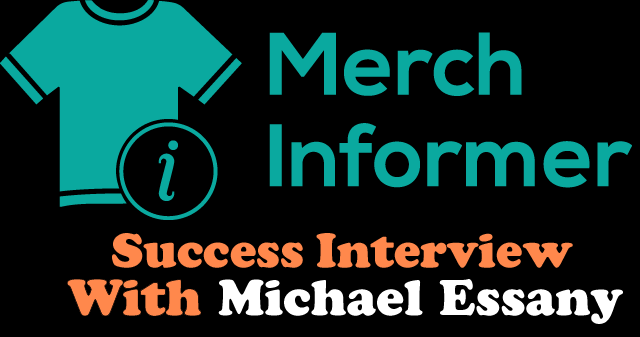
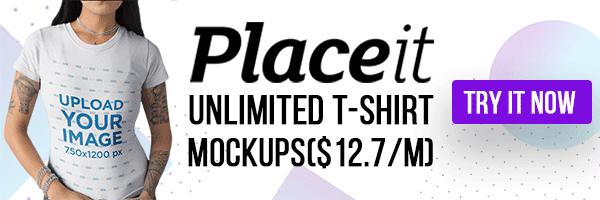
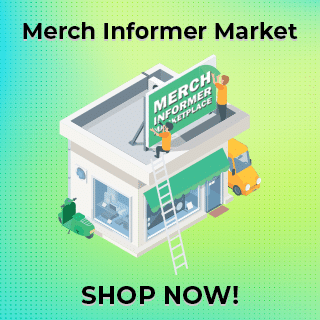
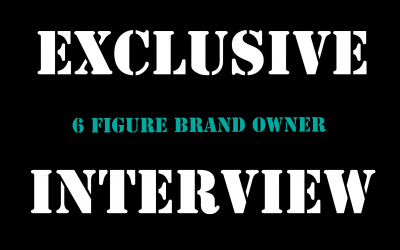
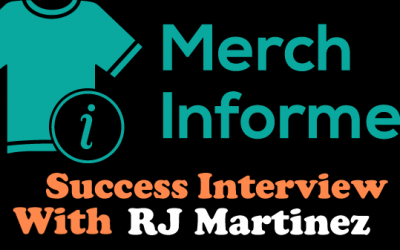
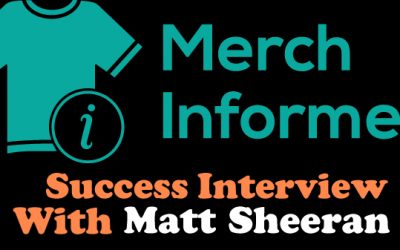
Hi Neil, with Amazon being more stricter with wording nowadays, do you personally still recommend the customer order a size up in the bullet points? Or is amazon against that? Doesn’t feel like an inaccuracy violation to me.
I do. I use it on every single one of my listings and have never had an issue at all.
Whew, thank you, that is quite a relief.
thank you!! very helpful as a newbie!!